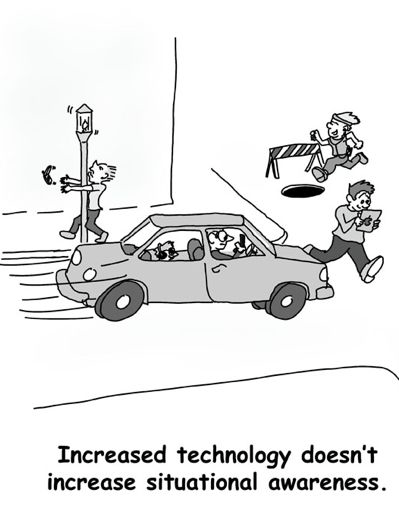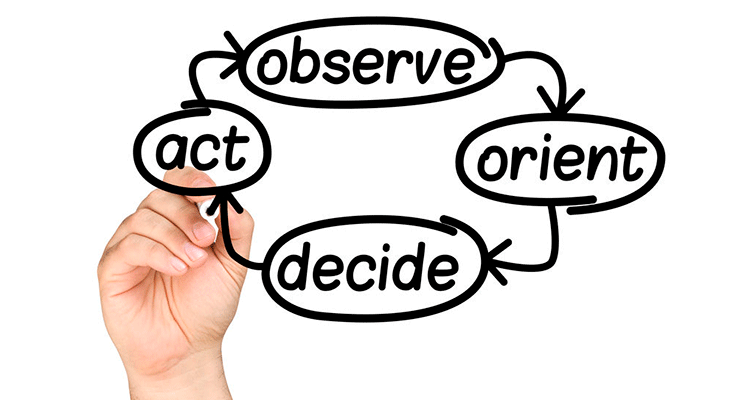Situational Awareness
 Have you noticed the dramatic rise over the last two-plus years in corporate AV/IT client demand for collaborative technology, huddle spaces and similar functionality? It’s a hot buzz word in the upper echelons of corporate management and HR departments. The thought process for most companies goes something like this:
Have you noticed the dramatic rise over the last two-plus years in corporate AV/IT client demand for collaborative technology, huddle spaces and similar functionality? It’s a hot buzz word in the upper echelons of corporate management and HR departments. The thought process for most companies goes something like this:
- Senior management decides that: “We need to build a team awareness culture into the company.”
- HR says: “We must involve more people in the decision making process.”
- The IT folks say: “We need to implement collaborative technology to facilitate these goals.”
- Somebody points out that: “Our old-style 20th, century video-conferencing systems are not capable of doing this job.”
- A decision is reached that: “We need NEW technology to make this happen.”
Then your phone rings!
That’s great because it might mean new business, but it also brings with it the following problem: Most clients mean well but are prone to ask for solutions they don’t actually want all the time.
It’s worse within this particular market segment because of “peer pressure perception,” for example: “Did you hear about the new system our major competitor just installed?” or something similar. And as if that alone wasn’t confusing everyone sufficiently, let’s add in the massive and ever expanding techno babble buzzword quota.
This easily leads even the knowledgeable customer to ask about something that really has no logical place in a design to meet their needs, but it’s what they saw, read about or heard that another company was doing.
This is where you need to take control and firmly but gently lead the conversation back to reality and go through their actual intended day-to-day use of the proposed new technology. It is at this juncture that you can usually refine the approach to simplify usability and save everyone, including yourself, a mountain of headaches and probably money down the road.
Leading the Discussion
In looking back over a number of projects that came in the door during the past 36 months, I have unfortunately reached a disturbing conclusion.
No matter how well documented your presentation, how detailed your explanation or logical your rationale, more than half of the people on any project team will totally miss the point — EVEN if you draw them a 3D map with GPS coordinates, you have to show them how to get there.
Let’s call this phenomenon the “too embarrassed to admit they don’t get it” problem.
In our industry, where we communicate in inscrutable jargon and offer technology that is well outside the ability of most end users to understand, this is a major but often hidden dilemma. We might suspect that it exists, even get solid hints about its lurking in the background, but very few of our customers/end users or buyers will come right out and tell us that they are completely lost. They put on a neutral expression and act like all is well.
Even more problematic is that they won’t raise the issue with the “senior management” whose brilliant idea all this new productivity hardware was in the first place. Nobody wants to look incompetent or inept in front of their boss! So they just go with the flow and I absolutely guarantee that we will get stuck with the blame or fault went the new stuff “doesn’t work.”
It Works Just Fine, They Just Never Learned How to Use It
Know this: ALL IS NOT WELL. Between our techno-speak and the probably equally confusing input from their IT folks, the actual user of the proposed “enhanced awareness” technology is actually less capable of being situationally aware than they were before the new systems were proposed. They had enough trouble trying to use the basic video or teleconferencing systems and now they’re being asked to adapt to something two orders of magnitude more complex and 10 orders of magnitude further outside their comfort zone.
The Second Phone Call
Assuming that the project went forward despite all the red warning flags and issues mentioned, it is extremely likely that your phone will ring again, but this time is because their system didn’t/isn’t (from their perspective) working properly.
They will sound aggravated, and may well be, but what they really are is embarrassed. In the new AV/IT world being embarrassed by your technology is brutally uncomfortable.
You need to know this is happening and find the best way to overcome this embarrassment pain point. HOW? TRAINING!
 Actually it is more than just training in the conventional sense, it’s what one client called built in first aid capability. Using the model shown in the graphic above, orient yourself to their world, decide how to build in the needed skills, and then act upon that knowledge to create a plan of what you can sell as “user orientation and operation” skills.
Actually it is more than just training in the conventional sense, it’s what one client called built in first aid capability. Using the model shown in the graphic above, orient yourself to their world, decide how to build in the needed skills, and then act upon that knowledge to create a plan of what you can sell as “user orientation and operation” skills.
Upper management is usually very receptive to the idea that for a little more budget, you can dramatically reduce service calls and downtime by educating their workforce sufficiently to actually make the thing work reliably and effectively. The ability you create within the client’s user base to solve basic issues will fix many minor problems as well. We have found that the rewards of building this into the project with interactive and intuitive training, which should be ongoing using online available resources, are many times more valuable than the time it costs to create them.
The satisfaction you generate when the client can make it work on their own and look smart in doing so is priceless!
If the vendors/manufacturers you work with don’t have or can’t supply training related materials maybe you need to work with those who can. Additionally you will likely want to invest in some self created online “guided tutorial” materials that the client can access any time from anywhere. Yes it’s an investment but it is tiny compared to the time and money you save in not making low or no revenue NPF* service calls. (*NPF = no problem found, i.e., user error)
Finally
Before we leave any project in the client’s hands, we’ll try to show them patiently what happens when you break the system, and see if they can fix it based on our training time together. It may take a bit more patience than you planned on, but it will be worth it.
What are you doing about customer pain points?





